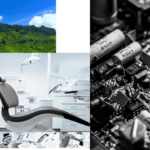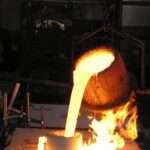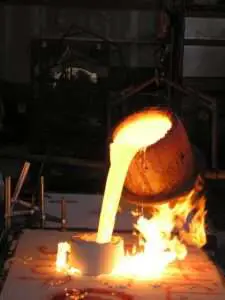
Fundamental Analysis and Intrinsic Value of Apollo Tyres Ltd. (2024-25)
In this article we will try to analyze Apollo Tyres Ltd. based on previous six years of financial statements viz Balance sheet, Profit and Loss statement and Cash flow statement. With this fundamental analysis we will try to gain insight into the business activities, financial health, operating efficiency and profitability of the company and finally try to derive the intrinsic value of the stock using Discounted Cash Flow method and the price at which the stock becomes attractive for long term investment. This article is divided in three sections as listed below :-
Section 1: Qualitative Fundamental Analysis comprising of General Introduction, Business overview dwelling into Business Model, Strengths and Weakness, Long Term Sustainability and finally the competitors.
Section 2:Quantitative Fundamental Analysis on Financial Health, Operating Efficiency And Profitability.
Section 3: Calculation Of Intrinsic Value.
General Introduction
Dated: 06 Feb 25
Company: Apollo Tyres Ltd.
CMP: Rs. 419.15
Market Capitalisation: Rs. 26,655.19 Cr.
Share Holding Pattern:

Promoters: Onkar Kanwar, Neeraj Kanwar
Peers: MRF, Balkrishna Industries, Ceat, JK Tyres
Fundamental Analysis Of Apollo Tyres Ltd.
General Introduction:
Apollo Tyres Ltd. is a leading player in the Indian tyre industry with over 50 years of experience. Headquartered in Gurgaon, it operates in more than 100 countries worldwide. The company has five manufacturing plants in India and one each in the Netherlands and Hungary. Apollo Tyres serves diverse segments, including passenger cars, commercial vehicles, off-highway vehicles, two-wheelers, and high-performance sports cars and SUVs. The company also owns Vredestein, a Netherlands-based international brand with a legacy of over 110 years. Its product portfolio includes tyres for cars, agricultural and industrial applications, as well as bicycle tyres, catering to a broad range of customer needs globally.
Business Overview:
The Indian economy has experienced remarkable growth, supported by changing consumer spending patterns, especially within the expanding middle-income demographic. A key trend emerging from the post-pandemic recovery is the increasing consumer preference for luxury and high-end products, which has surpassed the demand for basic necessities. This shift in spending behavior is largely driven by rising disposable incomes among middle- and high-income households. As these income levels are expected to grow further, it is likely that the demand for premium products will continue to accelerate, which, in turn, will fuel overall growth in private consumption expenditure.
The Indian automobile industry has also shown impressive performance. According to data from the Society for Indian Automobile Manufacturers (SIAM), total vehicle sales across all categories increased by 12.5% in the last fiscal year. Specifically, passenger vehicle sales grew by 8.4%. In the two-wheeler segment, a significant trend has been the rising demand for executive and premium-range models, particularly those with engine capacities exceeding 110 cc and 150 cc. Another noteworthy development has been the surge in electric two-wheeler sales, which rose by an impressive 33.3% during the fiscal year. This surge highlights the growing consumer inclination towards sustainable and environmentally-friendly mobility solutions.
The tyre industry plays a critical role in supporting the automotive sector, especially in the original equipment manufacturer (OEM) segment. Performance in the replacement segment is also closely linked to the broader economic activity in the country. Despite strong growth in the passenger vehicle segment, the tyre industry experienced a decline in the passenger car tyre category during the same period. There are two key reasons for this decline in the replacement market. First, the OEM market faced a significant downturn from FY20 to FY22, largely due to the initial impact of the COVID-19 pandemic and subsequent chip shortages that disrupted manufacturing. Second, the nationwide lockdowns implemented to curb the spread of COVID-19 led to decreased vehicle usage. This reduction in driving activity extended the replacement cycles for tyres, resulting in weaker demand.
One of the prominent players in this space, Apollo Tyres, is supported by two well-established brands in its core markets: Apollo and Vredestein. In Europe, the Vredestein brand, which has a legacy of over 100 years, is well-recognized and has a strong presence. It has also carved out a premium position in the market. The company’s new, modern manufacturing facility in Hungary enhances its potential to cater to the premium car tyre segment. Recently, Apollo Tyres has begun delivering its products to European OEM manufacturers, which validates the Vredestein brand’s premium positioning. This move is expected to boost demand in the replacement market as well. Furthermore, Apollo Tyres has introduced the Vredestein brand in India, targeting the country’s premium segment.
Apollo Tyres has distinguished itself as the largest player in the OEM channel, partnering with all of India’s top 10 OEM brands. Some of its notable OEM fitments include popular SUV models such as the Maruti Grand Vitara, Mahindra XUV 400 electric, Kia Seltos, and Toyota Hyryder and Hycross. Among its recent product additions is the Apollo Amperion, an exclusive electric vehicle (EV)-ready tyre specifically designed for SUVs. This tyre has been prominently featured on the newly launched Tata Punch EV, where it secured a majority fitment share. Apollo’s dominance in the OEM market and its strategic focus on innovation and premium products position the company favorably for future growth, both in India and globally. As consumer preferences continue to evolve towards premium and sustainable options, Apollo Tyres appears well-positioned to capitalize on these trends, leveraging its strong brand presence and robust product portfolio.
The company manufactures tyres under the following categories:
- Two wheelers
- Passenger cars
- Commercial vehicles including LCVs
- Trucks & Buses
- Agricultural vehicles
- Industrial tyres
As apart of its premiarisation drive to improve the overall profit margins, the company has sharpened its focus on high performance tyres for SUVs and sports cars, specialized tyres for EVs, long haul trailer tyres, all weather tyres, Ultra High Performance (UHP) and Ultra-Ultra High Performance (UUHP) summer tyre ranges etc.
Revenue break up by Geography:
| 2020 | 2022 | 2024 | |
| APMEA | 67.75% | 67.8% | 67.8% |
| Europe | 31.5% | 30.5% | 28.8% |
| Others | 0.75% | 1.7% | 3.4% |
Revenue breakup by Customers:
| 2020 | 2022 | 2024 | |
| Replacement | 80.9% | 80.9% | 78.5% |
| OEM | 19.1% | 19.1% | 21.5% |
Revenue breakup by Products:
| 2020 | 2022 | 2024 | |
| Trucks & Buses | 43% | 43.1% | 41.8% |
| Passenger Vehicles | 38.9% | 35.2% | 38.1% |
| Off Highway | 9.6% | 10.4% | 8.5% |
| Light Trucks | 6.1% | 5.7% | 6.2% |
| Others | 2.4% | 5.6% | 5.4% |
****************************************************
Financial Ratios
Leverage Ratios

Observations:
- The company has managed to bring down its debt levels. In absolute terms the debt has come down by 7.43% during the period.
- The interest coverage ratio has remained fairly stable during the period.
Operating Ratios

Observations:
- The company has maintained positive working capital for most part of the period except 2020. Indicating that its current assets are sufficient to cover its current liabilities.
- Receivable turnover has declined during the period, indicating that the company needs to proactively realise receivable.
Profitability Ratios

Observations:
- The average PAT margin for the period works out to be about 3.08%. This margin is lower than companies in the same sector producing specialty tyres for industrial and mining activities.
- The average ROCE for the period is 8.92%, however, at the current Enterprise Valuations ROCE works out to be lower than Long Term Government of India Bond Coupons for a new investor.
****************************************************
To learn Fundamental Analysis and Company intrinsic valuation visit
Intrinsic Analyst – Learning Center.
Also Check out Testimonials of people who joined us in this Investment Journey!!!
****************************************************
Author
Jibu Dharmapalan
SEBI Registered Research Analyst
Registration No. INH000014678
GSTIN: 32AHVPD3247L2Z3
Mobile: +91 9656125475
Click Here To Contact on – Whatsapp or Telegram
Check Intermediary on SEBI Website
If You Like This Content 👇👇👇
Click Here To Join Us on Facebook For Free Live Interactive Discussion And Learning
References:
BSE India – Apollo Tyres Annual Reports
Apollo Tyres – Investors – Annual Reports
Click Here for Home
FAQs
What is Intrinsic Value?
Ans: When someone invests in an asset, he does so in order to earn money from the business. The investor gets paid over a period of time as long as he is invested in the asset. Now intrinsic value is the present value of all such future cash flows generated by the asset. So logically one should not invest in any asset if the ask price is more than the intrinsic value of the asset.
How is Intrinsic Value of a company calculated?
Ans: For calculating the intrinsic value of a company all its future cash flows are extrapolated based on the past performance of the company, assumptions about the future growth of the company and its terminal value. Once all these are calculated these are brought to the present date based on appropriate discounting rate. The sum of all these gives the intrinsic value of the company. It may be more or less than the market capitalization of the company. If it is more than the market capitalization of the company then the company is said to be undervalued and is a good bet as a long-term investment and vice versa.
How is Intrinsic Value of a share calculated?
Ans: Once intrinsic value of a company is calculated as explained above, it is divided by the total number of outstanding shares of the company. This gives the intrinsic value of a share.
What is Discounted Cash Flow?
Ans: When we have cash flows that are spread over a period of time then Discounted Cash Flow method is used to calculate present value of all such cash flows. The present value depends on the discounting rate used. Usually 10 year Government bond yield rate(risk free rate of return) is used as the discounting rate.
















